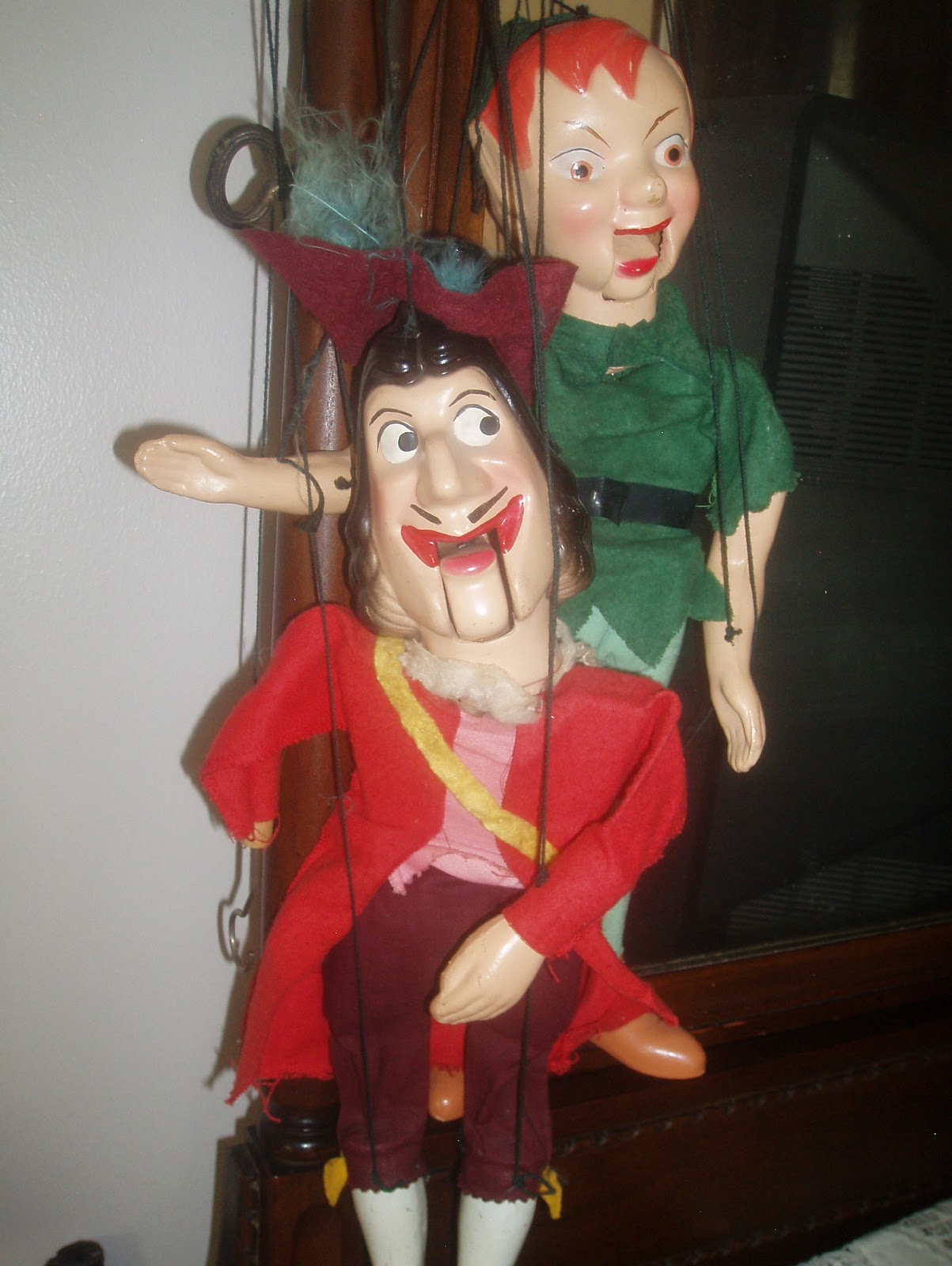Tinker Bell, the pots and pans fairy, has been envisioned by artists in more varied ways than Peter Pan himself.
J.M. Barrie describes her as "exquisitely gowned in a skeleton leaf, cut low and square, through which her figure could be seen to best advantage. She was slightly inclined to embonpoint." The French term meaning that she was probably plump and definitely busty, and the description in total implying she is proud of her charms. Artists have interpreted her more or less accordingly, with this less-than-ethereal, utterly 1980s version by Regis Loisel an apt interpretation.
Regis
Loisel, 1992
|
Perhaps his description
seemed too adult for earlier illustrators.
Marjorie
Torrey, 1957
|
Disney's Tinker Bell is
suitably sparkly and bratty, and I like how her wings are animated. I've never
been able to quite get my head around the ballerina bun and shoe
pompons, but this version is actually not far from Barrie's description.
Disney,
1953
|
The omnipresence of
Disney's Tink has not prevented artists from seeing her in guises
from this lovely, if slender, portrayal
Trina
Schart Hyman, 1980
|
to glamorous, ethereal versions
Anne
Graham Johnstone, 1988
|
to modern depiction like this one from Zenescope. Not a traditional portrayal, to be sure, but not as far from
Barrie as one might at first think.
Even before she became the de facto ambassador for Disneyland, Tinker Bell had traveled far from her beginnings as a spot of light projected about a stage.
















